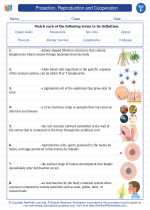Reproductive Glands
The reproductive system in humans consists of glands that play a vital role in the production of reproductive cells and the regulation of reproductive functions. The main reproductive glands in males are the testes, while in females, the ovaries are the primary reproductive glands.
Male Reproductive Glands
Testes: The testes are the primary male reproductive glands responsible for the production of sperm and the hormone testosterone. Sperm production occurs within the seminiferous tubules of the testes. Testosterone is essential for the development of male reproductive structures and secondary sexual characteristics.
Female Reproductive Glands
Ovaries: The ovaries are the paired reproductive glands in females. They are responsible for the production of eggs (ova) and the secretion of female sex hormones, including estrogen and progesterone. The ovaries release mature eggs during the process of ovulation, which typically occurs on a monthly basis.
Functions of Reproductive Glands
The reproductive glands perform several essential functions, including:
- Production of reproductive cells (sperm and eggs)
- Secretion of sex hormones
- Regulation of reproductive processes, such as puberty, menstrual cycle, and fertility
- Supporting the development of secondary sexual characteristics
Study Guide
To study the topic of reproductive glands, consider reviewing the following key points:
- Describe the structure and function of the testes in the male reproductive system.
- Explain the role of the ovaries in the female reproductive system, including their role in ovulation and hormone production.
- Discuss the importance of sex hormones produced by the reproductive glands in both males and females.
- Compare and contrast the reproductive glands in males and females, highlighting their similarities and differences.
- Explore the impact of reproductive gland disorders on human reproductive health and fertility.
Understanding the function and significance of reproductive glands is crucial for comprehending human reproduction and reproductive health. Be sure to review the anatomy, physiology, and hormonal regulation associated with these glands to gain a comprehensive understanding of the topic.
.◂Science Worksheets and Study Guides Sixth Grade. Protection, Reproduction and Cooperation
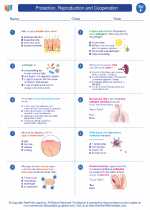
 Worksheet/Answer key
Worksheet/Answer key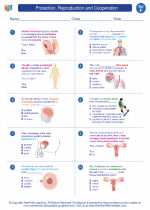
 Worksheet/Answer key
Worksheet/Answer key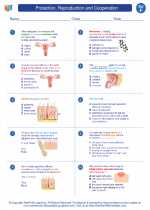
 Vocabulary/Answer key
Vocabulary/Answer key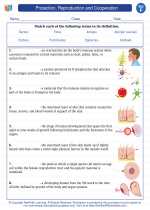
 Vocabulary/Answer key
Vocabulary/Answer key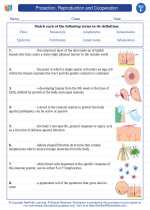
 Vocabulary/Answer key
Vocabulary/Answer key